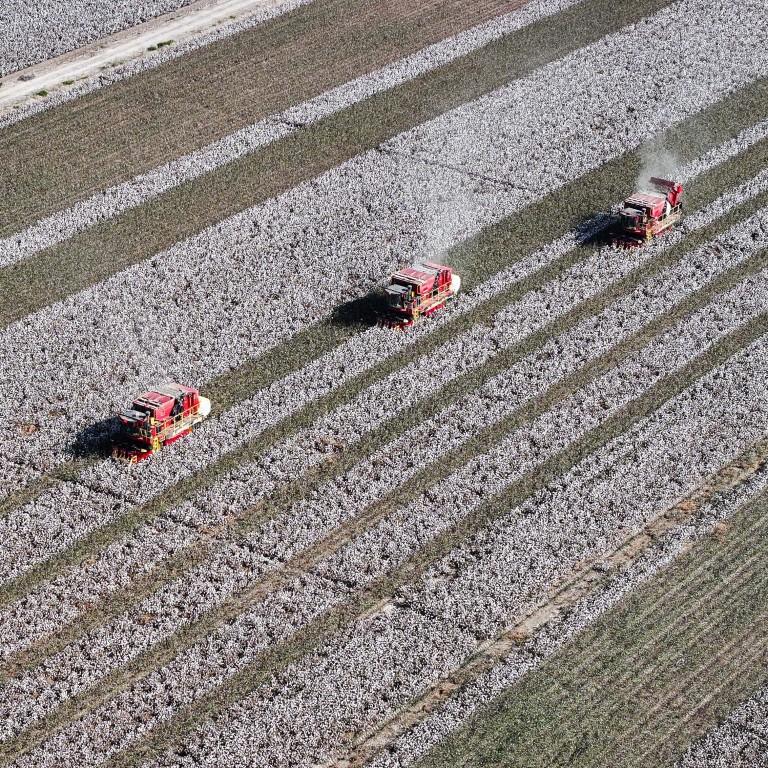beijingwalker
ELITE MEMBER

- Joined
- Nov 4, 2011
- Messages
- 65,191
- Reaction score
- -55
- Country
- Location
China trade: Xinjiang defies Western sanctions as foreign trade hits record high, surges by 47%
- Xinjiang’s foreign trade in the first three quarters of the year jumped by 47 per cent from a year earlier to 253 billion yuan (US$34.6 billion)
- Growth achieved despite Western economic sanctions imposed due to China’s alleged human rights abuses, spying and support of Russia’s war in Ukraine

China’s Xinjiang Uygur autonomous region is known as a production hub for goods ranging from agricultural staples such as cotton and tomatoes to materials including viscose and polysilicon. Photo: Xinhua
Western China’s Xinjiang Uygur autonomous region defied Western sanctions in the first nine months of the year as its foreign trade hit a record high.
Overseas shipments in the first three quarters of the year jumped by 47 per cent from a year earlier to 253 billion yuan (US$34.6 billion), already surpassing the total for 2022, according to Urumqi customs.
The growth was achieved despite Western economic sanctions imposed due to China’s alleged human rights abuses, spying and support of Russia’s war in Ukraine.
Other sanctions are aimed at curtailing China’s technological capabilities by restricting access to key suppliers.
Overall, Xinjiang’s exports surged by 48.8 per cent to 213 billion yuan, while its imports expanded by 40 per cent to 40 billion yuan.
The US enacted the Uygur Forced Labour Prevention Act last year to block imports of all goods sourced wholly or partly from Xinjiang, unless firms can provide “clear and convincing” evidence that their supply chains are free of forced labour. Beijing has repeatedly denied the allegations of forced labour.
The ban, which lasts for eight years, has the potential to have far-reaching effects on global supply chains, given Xinjiang’s status as a production hub for goods ranging from agricultural staples, such as cotton and tomatoes, to materials including viscose and polysilicon.
The products are among “high-priority” items that will face scrutiny by US customs.
Central Asian countries, though, continued to drive up Xinjiang’s foreign trade.
In the first nine months of the year, Kazakhstan, Kyrgyzstan and Tajikistan were Xinjiang’s top three trading partners, with trade increasing by 71 per cent, 33 per cent and 93 per cent, respectively.
Xinjiang’s trade with Belt and Road Initiative countries, meanwhile, grew by nearly 50 per cent in the first three quarters of the year.
In comparison, China’s total trade with belt and road participants grew by only 3.1 per cent in the first nine months, year on year.
In recent years, electric vehicles, lithium batteries and solar cells have replaced electromechanical products, apparel, shoes and hats as Xinjiang’s main exports.
In the first nine months Xinjiang’s exports of electric vehicles, lithium batteries and solar cells rose by 62 per cent.
In the first three quarters, Xinjiang’s combined value of exported labour-intensive and electromechanical products increased by over 50 per cent compared to the previous year.
The import volume also rose for mineral products, oils and fats, oilseeds and food during the same period.
Last month, China’s overall exports fell for a fifth consecutive month after dropping by 6.2 per cent from a year earlier to US$299.1 billion.
But the decline beat market expectations and was smaller than August’s 8.8 per cent contraction.
The drop in national imports also narrowed, falling by 6.2 per cent last month from a dip of 7.3 per cent in August.

Xinjiang defies Western curbs as foreign trade hits record high, surges by 47%
Foreign trade from China’s Xinjiang Uygur autonomous jumped by 47 per cent, year on year, in the first three quarters of 2023 despite Western economic sanctions.
